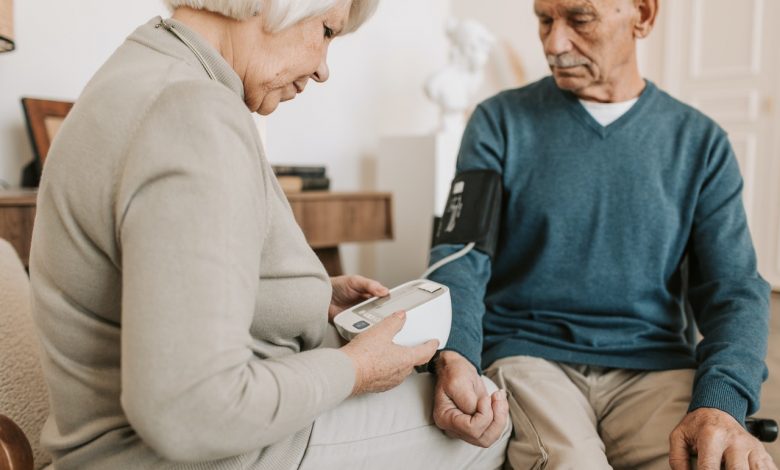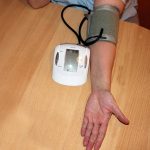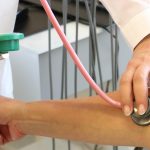Can You Take Loratadine With High Blood Pressure?

High blood pressure (hypertension) is a common condition in which the long-term force of the blood against your artery walls is high enough that it may eventually cause health problems, such as heart disease.
Blood pressure is determined both by the amount of blood your heart pumps and the amount of resistance to blood flow in your arteries. The more blood your heart pumps and the narrower your arteries, the higher your blood pressure. A blood pressure reading is given in millimeters of mercury (mm Hg). It has two numbers.
• The top number (systolic pressure). The first, or upper, number measures the pressure in your arteries when your heart beats.
• The bottom number (diastolic pressure). The second, or lower, number measures the pressure in your arteries between beats.
Certain medications can cause you to retain water, trigger certain imbalance that creates kidney problems, and increases your blood pressure. In this article, we shall be looking at the relationship between Xanax and high blood pressure.
What is loratadine?
Loratadine is an antihistamine that reduces the effects of the natural chemical histamine in the body. Histamine can produce symptoms of sneezing, itching, watery eyes, and a runny nose.
Loratadine is used to treat sneezing, runny nose, watery eyes, hives, skin rash, hay fever, itching, and other cold or allergy symptoms.
Loratadine is also used to treat skin hives and itching in people with chronic skin reactions
How should loratadine be used?
Loratadine comes as a syrup (liquid), a tablet, and a rapidly disintegrating (dissolving) tablet to take by mouth. It is usually taken once a day with or without food. Follow the directions on the package label carefully, and ask your doctor or pharmacist to explain any part you do not understand. Take loratadine exactly as directed. Do not take more or less of it or take it more often than directed on the package label or recommended by your doctor. If you take more loratadine than directed, you may experience drowsiness.
If you are taking the rapidly disintegrating tablet, follow the package directions to remove the tablet from the blister package without breaking the tablet. Do not try to push the tablet through the foil. After you remove the tablet from the blister package, immediately place it on your tongue and close your mouth. The tablet will quickly dissolve and can be swallowed with or without water.
Do not use loratadine to treat hives that are bruised or blistered, that have an unusual color, or that do not itch. Call your doctor if you have this type of hives.
Stop taking loratadine and call your doctor if your hives do not improve during the first 3 days of your treatment or if your hives last longer than 6 weeks. If you do not know the cause of your hives, call your doctor.
If you are taking loratadine to treat hives, and you develop any of the following symptoms, get emergency medical help right away: difficulty swallowing, speaking, or breathing; swelling in and around the mouth or swelling of the tongue; wheezing; drooling; dizziness; or loss of consciousness. These may be symptoms of a life-threatening allergic reaction called anaphylaxis. If your doctor suspects that you may experience anaphylaxis with your hives, he may prescribe an epinephrine injector (EpiPen). Do not use loratadine in place of the epinephrine injector.
Do not use this medication if the safety seal is open or torn.
Can you take Loratadine with High Blood Pressure?
Yes, loratadine is safe in patients with high blood pressure and other forms of heart disease. However, an antihistamine like loratadine may slightly elevate blood pressure or increase heart rate, according to the U.S. Food and Drug Administration (FDA).
In addition, medicines containing decongestants including Allegra-D, Zyrtec-D, and Claritin-D could increase your blood pressure and heart rate or interfere with your heart medication.
Always check with your doctor, pharmacist, or healthcare provider before you take a new medication, whether it’s for a cold, allergies, or something else, to find out if it is compatible with certain medical conditions and your current drug therapy
Managing allergy and colds with hypertension
If you can’t take a decongestant because of high blood pressure, there are other ways to reduce your cold or allergy symptoms:
• Take Coricidin HBP, which is free of decongestants
• Drink plenty of fluids — including water, juice, tea, and soup — to prevent dehydration and clear mucus from your lungs
• Take a pain reliever such as Tylenol or Motrin for fever, sore throat, body aches, and headache
• Flush your sinuses with a saline spray to relieve nasal congestion
• Soothe a sore or scratchy throat with lozenges
• Use a vaporizer or humidifier if necessary to boost humidity
• Get plenty of rest
• Return to your doctor after five to seven days to make sure you’re on the road to recovery





